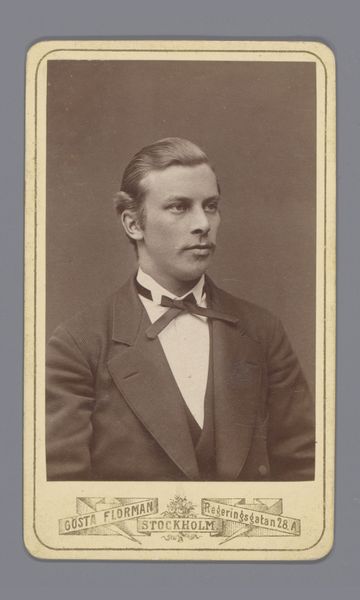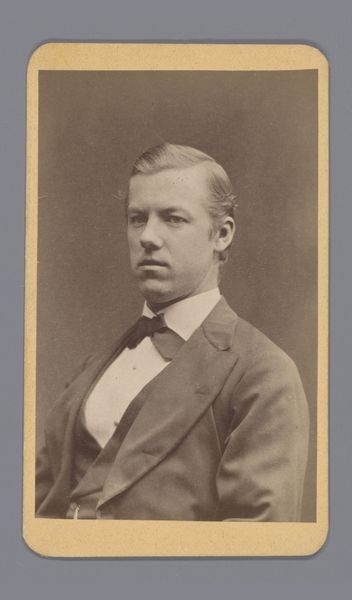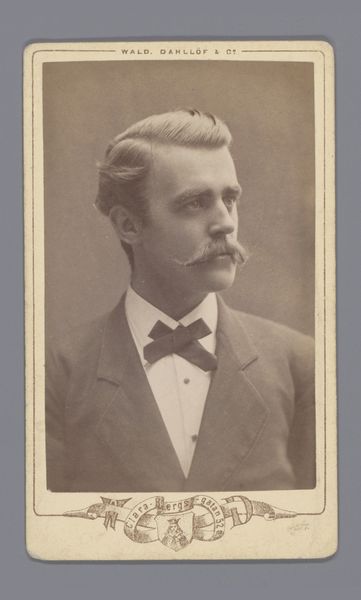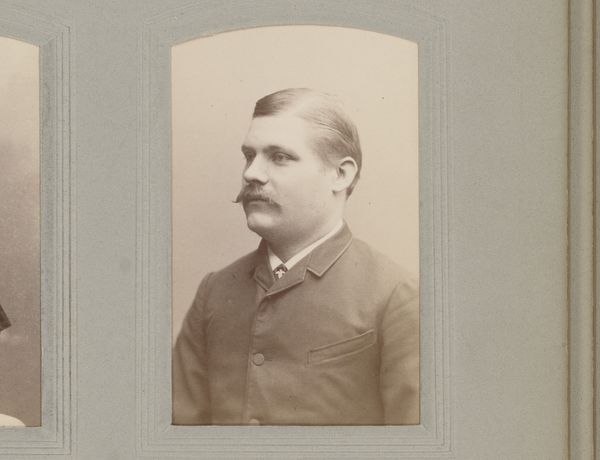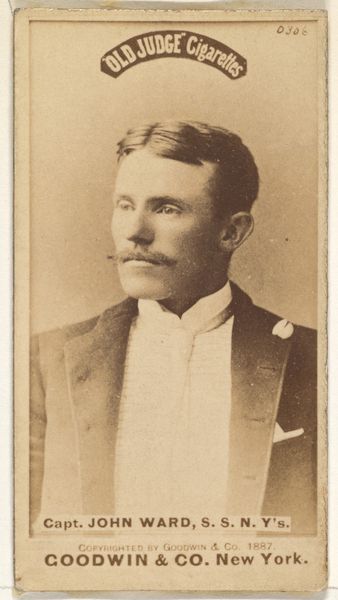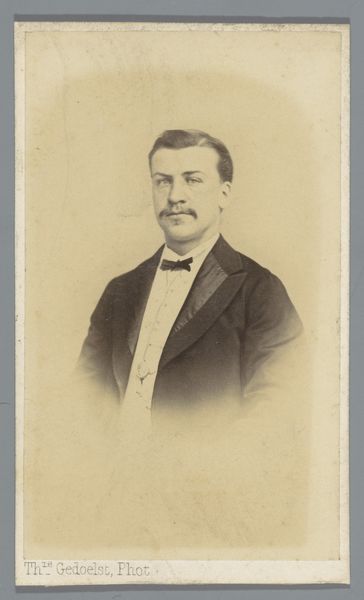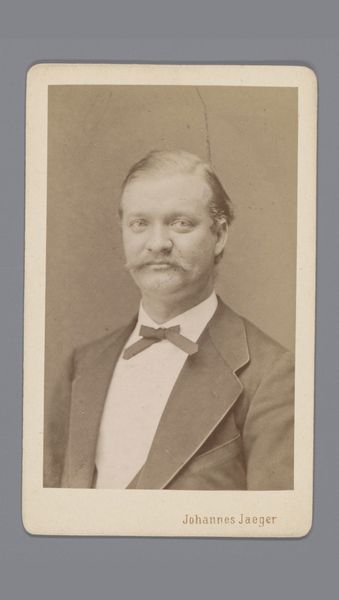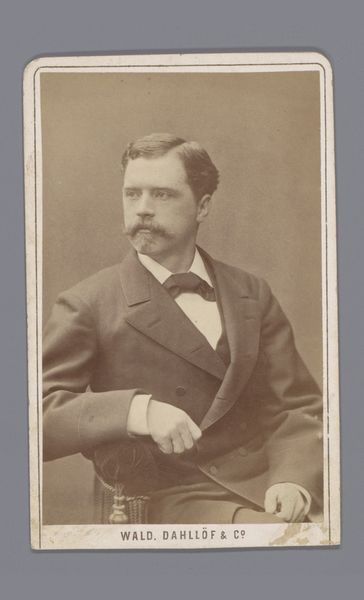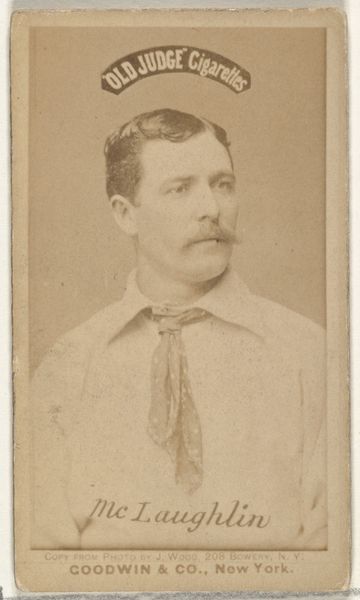
photography, gelatin-silver-print
#
portrait
#
photography
#
historical fashion
#
gelatin-silver-print
#
genre-painting
Dimensions: height 101 mm, width 63 mm
Copyright: Rijks Museum: Open Domain
Curator: Henri Ostis created this photographic portrait, dating from around 1870 to 1880. It's a gelatin silver print, capturing an unknown man. My initial impression is of understated elegance. The sepia tones and classical composition give it a timeless feel. Editor: Timeless, perhaps, but I also see a potent commentary on societal roles. Looking at this portrait, I see a representation of masculine identity within a strict, bourgeois framework. His neatly groomed hair and meticulously tied bow convey respectability. Curator: You make an interesting point. But let's consider the formal elements for a moment. The careful use of light creates depth and dimension. It emphasizes the subject's features, inviting the viewer to contemplate his character. His piercing gaze makes for a solid focal point, and the texture in his coat draws the eye across the image. Editor: And that very gaze, sharp and self-assured, speaks volumes about the subject’s social standing and the expectations placed upon him. This man, although nameless to us, embodies the ideals of his time: authority, restraint, and social decorum. This image serves not only as a recording of a particular man but as evidence of prevailing values in 19th century society. Curator: Yes, there is that context for us to consider too, yet still, I would invite one to see also how Ostis utilized a muted tonal range; how the subtlety is striking. How does this build a particular mood or effect through contrasts, while allowing the texture to create greater richness in such an unassuming image? Editor: And that rich materiality serves as a vehicle for understanding the rigid power dynamics at play, the performance of class and the pressure to uphold standards. Photography during this era reinforced class distinctions, didn’t it? Curator: Indeed, which underscores why approaching Ostis’ portrait demands attention to social constructs—to what's depicted, how, and, of course, the inescapable implications. Editor: Precisely. Examining it formally allows us to further unpack social realities and inequalities—it provides unique insights that mere historical accounts often fail to capture. Curator: It’s always revealing to reflect upon those broader concepts that photography serves to frame, while admiring the image in itself. Editor: A dialogue where technique illuminates history—perfect!
Comments
No comments
Be the first to comment and join the conversation on the ultimate creative platform.
